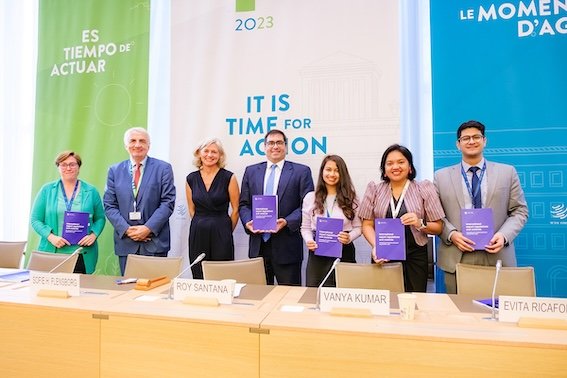
Your Sanctions & Export Controls Toolbox

Your Sanctions & Export Controls Toolbox

Understanding international export regulations: WTO book on export controls
Introduction to export controls
In an era characterized by global cooperation, numerous international agreements and conventions have been established. First, to address a range of areas, from environmental protection and public health protection to promoting peace and security. To which members of the World Trade Organization (WTO) have signed these international agreements. So that there is a variety of international trade regulations and controls over trade in controlled and sensitive goods. As a result, this publication discusses how we see these international agreements coexisting with WTO rules.
Such as the 1994 General Agreement on Tariffs and Trade (GATT) and transparency requirements for reporting quantitative restrictions. While these agreements have traditionally focused on import regulations, they increasingly include rules that control exports. In doing so, this free e-book from the WTO offers insights into international agreements. In short, it deals with export regulations, mainly focused on environmental protection, hazardous waste management, arms control and combating illegal drugs.
Deciphering the WTO book on export controls
Understanding international export regulations
To manage risks and control trade in sensitive goods, WTO members implement measures such as bans, export licenses and international trade regulations. In addition, these measures serve various purposes, from environmental protection and hazardous waste management to combating illegal drugs, promoting peace and arms control. WTO members are required to report all Quantitative Restrictions (QRs) every two years. This is to ensure transparency. With which many members have export restrictions on items such as nuclear materials, narcotics and weapons for environmental protection. As a result, the publication examines how international export regulations work under international and WTO agreements. Especially with regard to environmental protection, drug control and arms disarmament.
Related legal disciplines
WTO guidelines for export controls are not contained in a single treaty. By contrast, they exist in several multilateral trade agreements negotiated by WTO members. In addition, they are linked to the Agreement Establishing the World Trade Organization (WTO Agreement). Article XI of GATT 1994 calls for the elimination of export restrictions.
To promote transparency, WTO members agreed to report all prohibitions and restrictions on trade in goods under the QR Decision. This information is included in the WTO’s Quantitative Restrictions (QR) Database. Reports of all ongoing QRs are submitted twice a year. This along with prompt notification of changes. Chemical products are most affected by export measures, followed by optical and measuring instruments, machinery and pharmaceuticals.
Major non-WTO agreements cited for restrictions include the United Nations Convention against Illicit Traffic in Narcotic Drugs and Psychotropic Substances and the Wassenaar Arrangement on Export Controls.
Export controls: arms and disarmament
The e-book examines environmental protection, drug control and arms and disarmament. The latter includes:
- United Nations Security Council resolutions on export controls
- The Chemical Weapons Convention
- The Arms Trade Treaty
- The Australia Group
- The Wassenaar Package
UN Resolution 1540, adopted in 2004, seeks to prevent weapons proliferation. Although it does not set specific trade measures, many UN members have implemented export controls.
Administered by the OPCW, the treaty requires states to declare and eliminate their chemical weapons stockpiles and facilities. They are also banned from exporting chemical weapons. Or import or help others in their development. Trade measures, such as import and export regulations, apply primarily in connection with the Treaty’s transfer regime and related OPCW decisions.
Adopted by the UN General Assembly in 2013, the Arms Trade Treaty (ATT) regulates international trade in conventional arms to prevent and eradicate illicit trafficking and detour. The treaty seeks to establish high international standards for regulating the arms trade and preventing its abuse.
The Australia Group (AG) works to impede the proliferation of chemical and biological weapons. It is required for members to prevent the proliferation of weapons proliferation, as a manufacturer, exporter or transporter of controlled items.
Finally, the Wassenaar Arrangement. This is the first multilateral body focusing on export controls for conventional arms and dual-use goods and technologies. This arrangement is open to potential members who meet the agreed criteria. Where it considers whether the entity is a producer or exporter of arms or industrial equipment, whether it uses the Wassenaar Arrangement control list as a reference in its national export controls, and its nonproliferation policy and compliance with effective export controls.
Conclusion
The WTO e-book on export controls provides in-depth insights into measures implemented by members. And it highlights the background, purpose and requirements of each audit. This publication is particularly useful for businesses. The free e-book includes an appendix with a list of international agreements on export controls for each member state. This allows companies to view the export controls applicable in their business locations. The book is intended to help policymakers, officials, academics and the public understand international export regulations and their connection to the multilateral system. This publication, which strives for transparency, serves as a handy guide for businesses.
Read WTO’s free e-book on export controls here
Support
Do you need support on export controls? Are you looking for a trade compliance project manager or would you like a compliance baseline measurement performed by Trade Controls Compliance? Contact us.
Trade Controls Compliance – Your Sanctions & Export Controls Toolbox!!!
Contact form
Your sanctions and export controls toolbox
If you have questions about our services or are interested, please contact us using our contact form. Our Trade Controls Compliance contact form allows you to leave your information with us, and we will contact you. If desired, you can already provide more details about your export control, supply chain security or trade compliance problem.
We treat your information carefully in accordance with privacy laws and strive to respond to your message within two business days.
Thank you for your interest in Trade Controls Compliance.
Of course, you can also contact us through our Trade Controls Compliance LinkedIn page or directly with Robert van de Ruit.